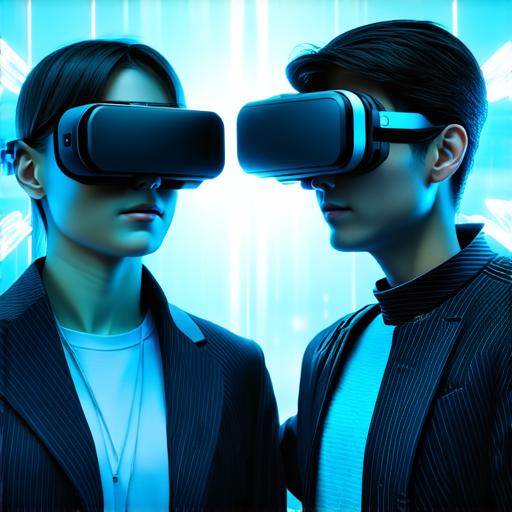Virtual reality (VR) and augmented reality (AR) are two of the most popular emerging technologies in the digital world. Despite their similarities, they have distinct differences that set them apart. In this article, we will explore what distinguishes AR from VR and how they differ from one another.
What is Virtual Reality?
Virtual reality refers to a computer-generated simulation of a 3D environment that a user can interact with using specialized devices such as headsets or gloves equipped with sensors. The goal of VR is to create an immersive experience that feels as if the user is physically present in the simulated environment.
What is Augmented Reality?
Augmented reality, on the other hand, refers to the addition of digital information or objects to a real-world environment. AR uses sensors and cameras to track the user’s position and then overlays digital information onto the camera feed. This allows the user to see the real world as well as digital content.
Differences between VR and AR

One of the main differences between VR and AR is the level of immersion. VR provides a completely immersive experience, whereas AR is more of an enhancement to the real world. AR allows users to see both the physical world around them and digital content, while VR completely blocks out the real world.
Another difference between VR and AR is the way they interact with the user’s environment. VR requires specialized equipment and a designated space to create the immersive experience, whereas AR can be used in any environment and does not require any special equipment.
In addition, VR typically involves the use of headsets or other devices that completely cover the user’s vision, while AR uses sensors and cameras that allow the user to see both their physical surroundings as well as digital content.
Examples of VR and AR
One example of VR is a gaming experience, where the user wears a headset and interacts with a virtual environment using hand controllers or other input devices. Another example is a medical training scenario, where the user wears a headset and interacts with a simulated patient in a controlled environment.
AR examples include the use of filters on social media apps such as Instagram or Snapchat, which add digital elements to the camera feed. AR can also be used for educational purposes, such as overlaying digital information onto historical landmarks to provide additional context and information.
Conclusion
In conclusion, while virtual reality and augmented reality both involve the use of digital technology to enhance or simulate real-world experiences, they differ in their level of immersion, interaction with the environment, and equipment requirements. VR provides a completely immersive experience, while AR is more of an enhancement to the real world. As these technologies continue to evolve, we can expect to see even more creative and innovative applications for both VR and AR.
